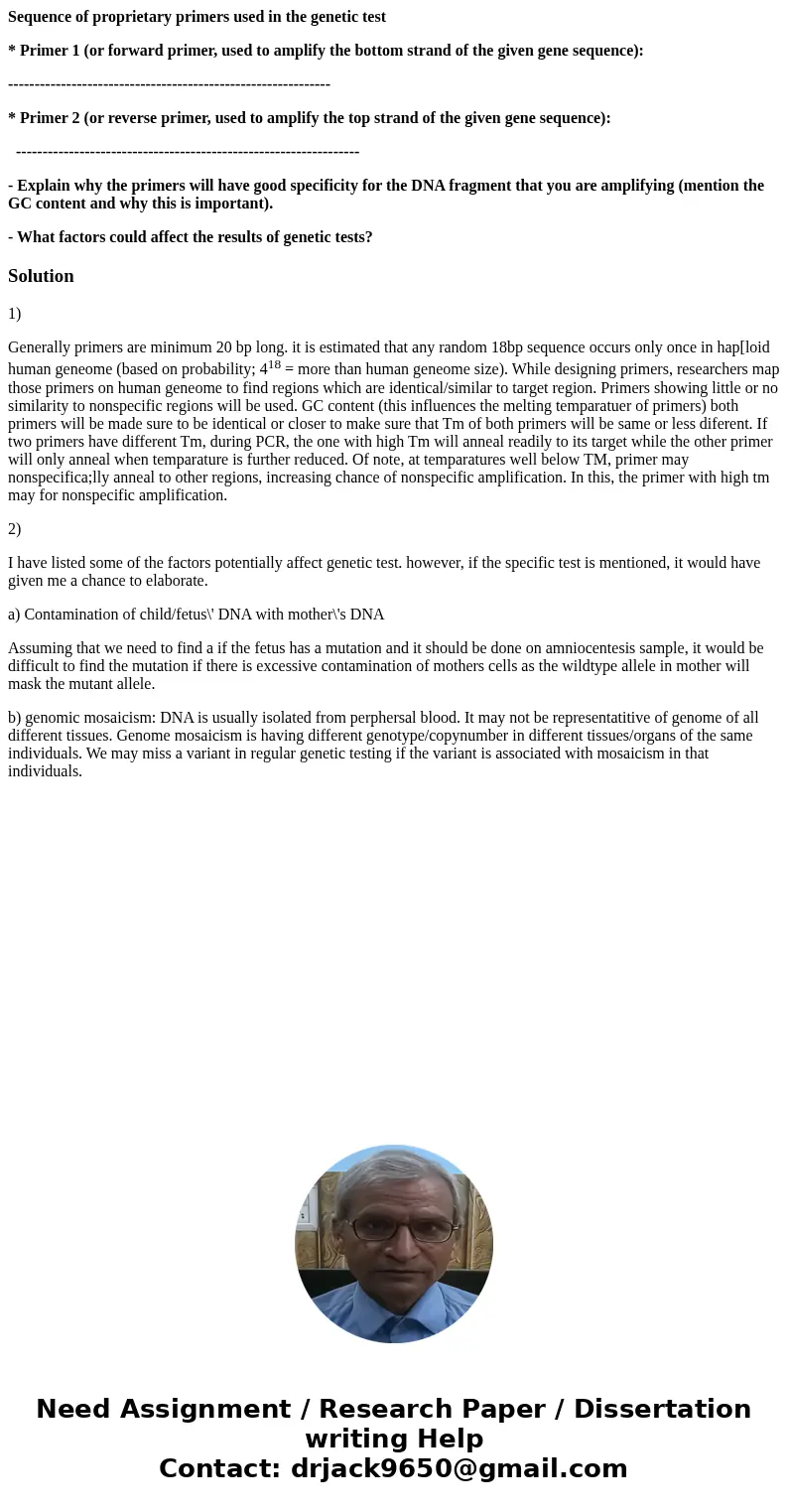Sequence of proprietary primers used in the genetic test Pr
Sequence of proprietary primers used in the genetic test
* Primer 1 (or forward primer, used to amplify the bottom strand of the given gene sequence):
-------------------------------------------------------------
* Primer 2 (or reverse primer, used to amplify the top strand of the given gene sequence):
-----------------------------------------------------------------
- Explain why the primers will have good specificity for the DNA fragment that you are amplifying (mention the GC content and why this is important).
- What factors could affect the results of genetic tests?
Solution
1)
Generally primers are minimum 20 bp long. it is estimated that any random 18bp sequence occurs only once in hap[loid human geneome (based on probability; 418 = more than human geneome size). While designing primers, researchers map those primers on human geneome to find regions which are identical/similar to target region. Primers showing little or no similarity to nonspecific regions will be used. GC content (this influences the melting temparatuer of primers) both primers will be made sure to be identical or closer to make sure that Tm of both primers will be same or less diferent. If two primers have different Tm, during PCR, the one with high Tm will anneal readily to its target while the other primer will only anneal when temparature is further reduced. Of note, at temparatures well below TM, primer may nonspecifica;lly anneal to other regions, increasing chance of nonspecific amplification. In this, the primer with high tm may for nonspecific amplification.
2)
I have listed some of the factors potentially affect genetic test. however, if the specific test is mentioned, it would have given me a chance to elaborate.
a) Contamination of child/fetus\' DNA with mother\'s DNA
Assuming that we need to find a if the fetus has a mutation and it should be done on amniocentesis sample, it would be difficult to find the mutation if there is excessive contamination of mothers cells as the wildtype allele in mother will mask the mutant allele.
b) genomic mosaicism: DNA is usually isolated from perphersal blood. It may not be representatitive of genome of all different tissues. Genome mosaicism is having different genotype/copynumber in different tissues/organs of the same individuals. We may miss a variant in regular genetic testing if the variant is associated with mosaicism in that individuals.

 Homework Sourse
Homework Sourse